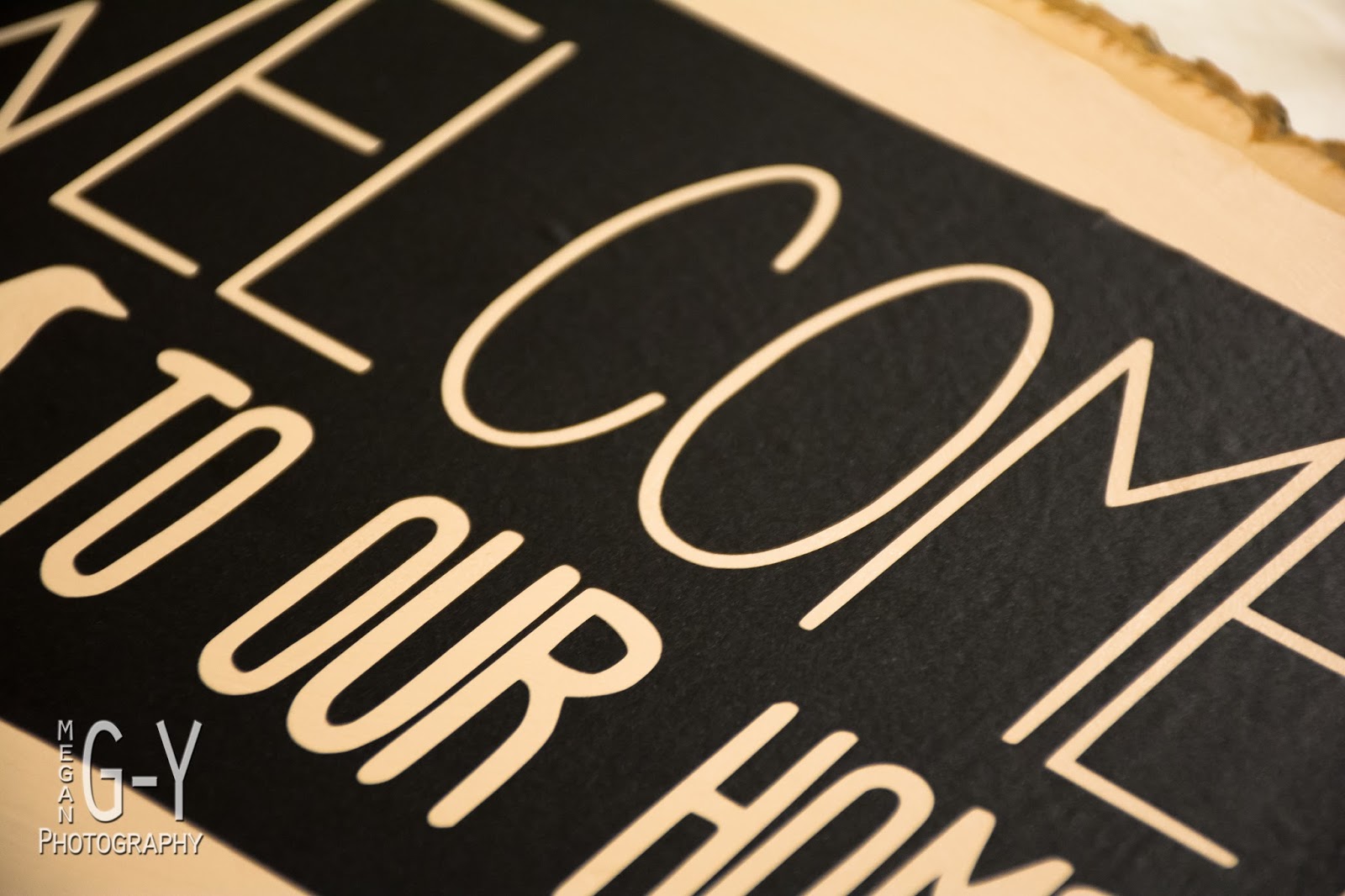My front door has been bare since I put away the Christmas decorations. I wasn't sure what I wanted to put up afterward because I'm not a big fan of the DIY burlap or fabric wreaths that seem to be in fashion right now. A painted wood sign was calling my name for a number of reasons. First, an excuse to use my Silhouette machine to cut some vinyl (and create a custom design). And second, being a military family, we move quite a bit and it's nice to make things that the movers are unlikely to break due to poor packing. I like some of the beautiful spring wreaths in Michaels and JoAnn's, but they definitely wouldn't survive more than one move.
I was inspired by a whole bunch of Pinterest finds but most of them use chalkboard paint as the background. I wanted to go in a different direction, even if that means no flexibility in changing the text, unless I repaint it of course. I hope you enjoy this project as much as I did!
So off I went to JoAnn's. I grabbed some twine, a round piece of basswood (like this), and some outdoor acrylic paint. Grabbed some foam paint applicators as well for the stenciling.
I was eager to get started so as soon as I got home I got to it. Cut some twine and tied some quick knots and used a staple gun to attach to the back. I brushed the dust off the wood and immediately got a coat of the cream paint on it. Waited about an hour and put a second one on. It took more paint than I was expecting so I think a lot of the first coat soaked into the wood.
I wanted to give the background paint a solid day to dry before putting the vinyl stencil on it, so I tackled the design next. I toyed with some traditional script fonts, but that really isn't my style. I finally settled on something really simple. I sized mine to fit my piece of wood, so resize if you need to. I printed out a copy on regular printer paper to make sure it's the right size.
Fast forward to a day later. The cream paint is nice and dry so I made the stencil out of some Silhouette vinyl. Used transfer tape to get it onto the wood after weeding out the letters. I was a little worried about the vinyl sticking well to the wood so I smoothed the thing like crazy before pulling the transfer tape off. And even more smoothing after,
See that little bubble adjacent to the C? That guy's got to go!!
Once I was done smoothing, I added a border of blue painter's tape in case I went too wild with the black paint. Then I got to work with some black outdoor acrylic paint (same brand as the cream I showed you earlier. I ended up using whatever paint brushes I found in my craft drawer. Sponge applicators didn't seem like the right tool for this one.
I did two light-ish coats. I was really impatient so I don't think I waited more than about 15 minutes between layers. But it looked pretty dry. And it was Monday night and I was really tired :)
Once the second layer was sorta dry, I started carefully peeling everything off. I was nervous because I had read about some people losing some of their background paint to the vinyl, but that definitely wasn't a problem for me. I didn't lose even a flake of the cream paint. All that's left to do in the photo below is to weed out the centers of the Os. I used the tip of a pocket knife because the Silhouette tool left a little indentation in the wood when I tried to use it.
There is a tiny amount of bleeding, but I won't be losing any sleep over it. Overall, the lines are really crisp and it turned out exactly like I was hoping it would!
I think the bird is my favorite part! I'm debating about whether to give it a coat of matte sealer or not. My front door is fairly protected, although the Arizona heat and sun are absolutely brutal. I guess I'll just move it inside if it looks like it's fading.






























